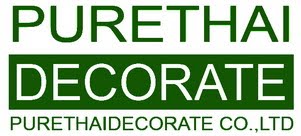Materials
The materials used in laminates can be the same or different. An example of the type of laminate using different materials would be the application of a layer of plastic film — the "laminate" — on either side of a sheet of glass — the laminated subject. Vehicle windshields are commonly made by laminating a tough plastic film between two layers of glass. Plywood is a common example of a laminate using the same material in each layer. Glued and laminated dimensioned timber is used in the construction industry to make wooden beams, Glulam, with sizes larger and stronger than can be obtained from single pieces of wood. Another reason to laminate wooden strips into beams is quality control, as with this method each and every strip can be inspected before it becomes part of a highly stressed component such as an aircraft undercarriage.
 Examples of laminate materials include Formica and plywood. Formica and similar plastic laminates (such as Pionite, Wilsonart, Lamin-Art or Centuryply Mica) are often referred to as High Pressure Decorative Laminate (HPDL) as they are created with heat and pressure of more than 5 psi (34 kPa). A new type of HPDL is produced using real wood veneer or multilaminar veneer as top surface. Alpikord produced by Alpi spa and Veneer-Art, produced by Lamin-Art are examples of these types of laminate.
Examples of laminate materials include Formica and plywood. Formica and similar plastic laminates (such as Pionite, Wilsonart, Lamin-Art or Centuryply Mica) are often referred to as High Pressure Decorative Laminate (HPDL) as they are created with heat and pressure of more than 5 psi (34 kPa). A new type of HPDL is produced using real wood veneer or multilaminar veneer as top surface. Alpikord produced by Alpi spa and Veneer-Art, produced by Lamin-Art are examples of these types of laminate.Laminating paper, such as photographs, can prevent it from becoming creased, sun damaged, wrinkled, stained, smudged, abraded and/or marked by grease, fingerprints and environmental concerns. Photo identification cards and credit cards are almost always laminated with plastic film. Boxes and other containers are also laminated using a UV coating. Lamination is also used in sculpture using wood or resin. An example of an artist who used lamination in his work is the American, Floyd Shaman.
Further, laminates can be used to add properties to a surface, usually printed paper, that would not have them otherwise. Sheets of vinyl impregnated with ferro-magnetic material can allow portable printed images to bond to magnets, such as for a custom bulletin board or a visual presentation. Specially surfaced plastic sheets can be laminated over a printed image to allow them to be safely written upon, such as with dry erase markers or chalk. Multiple translucent printed images may be laminated in layers to achieve certain visual effects or to hold holographic images. Many printing businesses that do commercial lamination keep a variety of laminates on hand, as the process for bonding many types is generally similar when working with arbitrarily thin material.
[edit] Types of laminators
Three types of laminators are used most often in digital imaging:
* Pouch laminators
* Heated roll laminators
* Cold roll laminators
[edit] Film types
Laminate film is generally categorized into these five categories:
* Standard thermal laminating films
* Low-temperature thermal laminating films
* Heatset (or heat-assisted) laminating films
* Pressure-sensitive films
* Liquid laminate

No comments:
Post a Comment